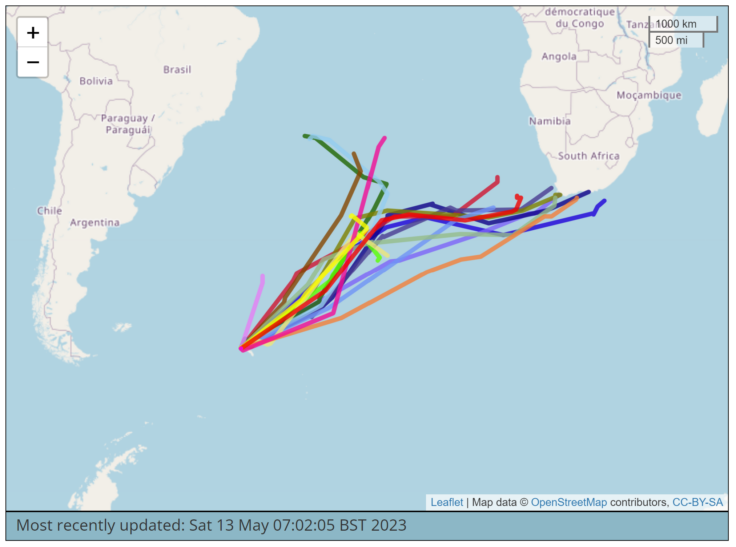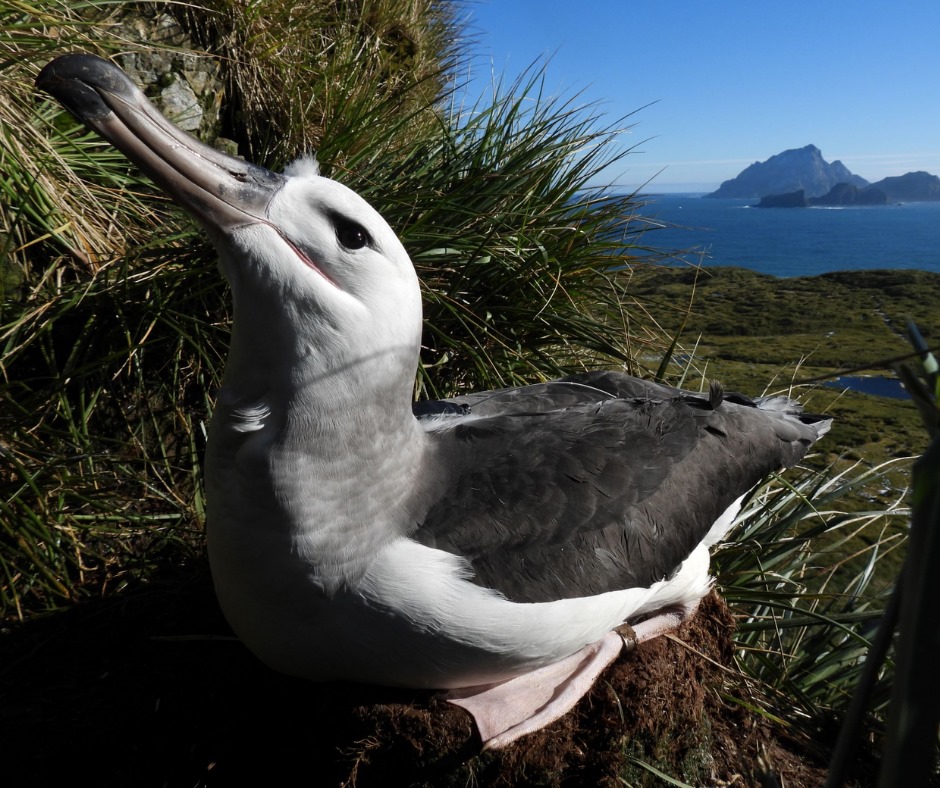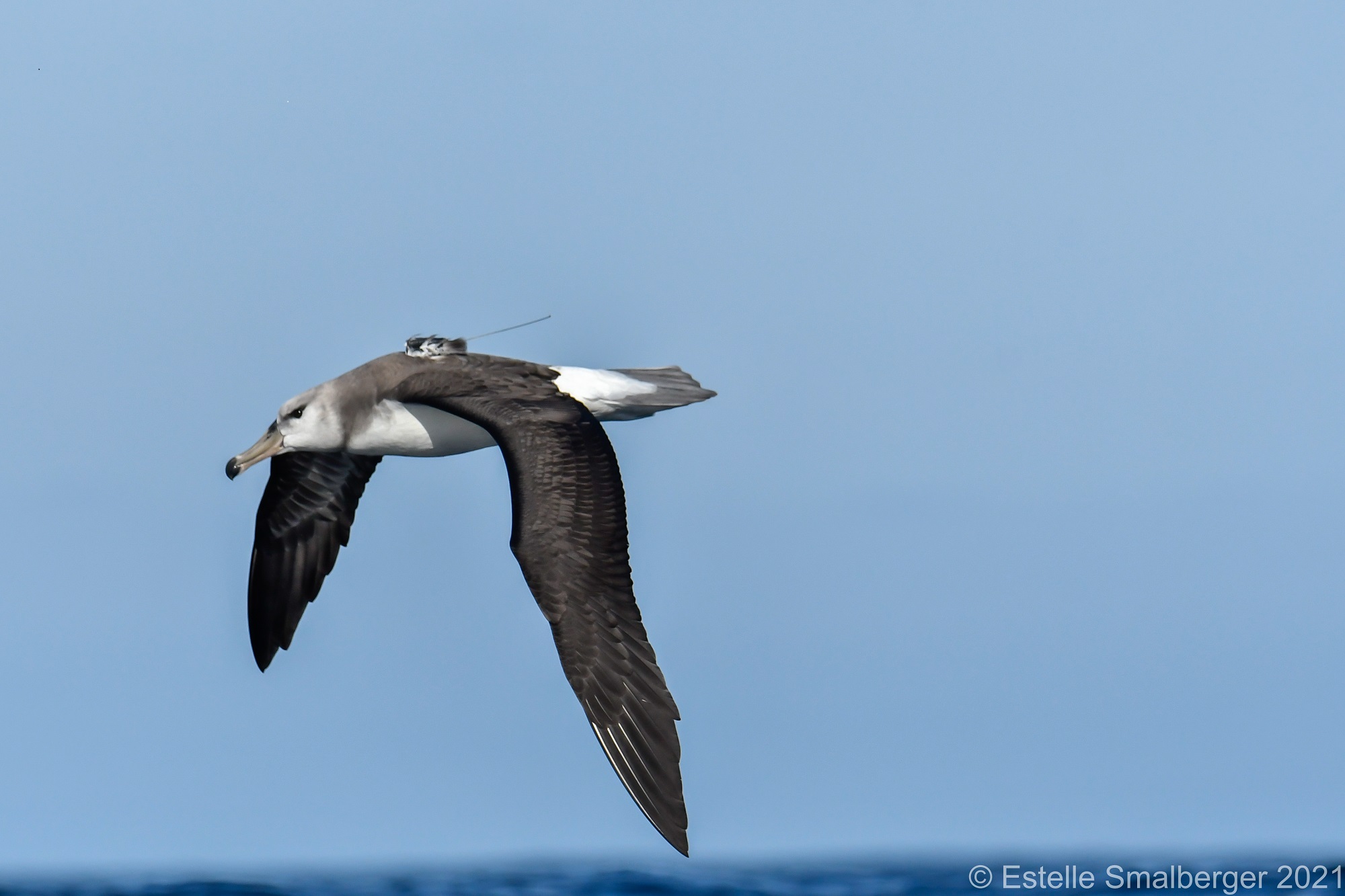
Tracks as on 13 May of juvenile Black-browed Albatrosses fledged from Bird Island in 2023; click here to view the most recent tracks
In a study that commenced in 2021, 26 fledging Black-browed Albatrosses Thalassarche melanophris on Bird Island in the South Atlantic were fitted in April this year with satellite transmitters in a project run by Richard Phillips of the British Antarctic Survey. The main aims of this study are to map the distribution of juvenile birds to determine overlap with fisheries and the main environmental drivers of their movements, and to assess the survival rate of juveniles in the critical months after they fledge.
The young birds are being tracked in near real-time using the Argos system. Nearly all the birds have been taking a north-easterly route towards southern Africa. As of 22 May several have reached the Benguela Current region off the coasts of Namibia and western South Africa. A few have continued into the Indian Ocean on the Agulhas Bank off South Africa’s Western Cape.

A Black-browed Albatross chick shortly to fledge from Bird Island in 2021 awaits its satellite tracker, photograph by James Crymble
“The population of adult albatross have been affected globally by longline and trawler fishing, with birds becoming trapped by fishing equipment, or swallowing baited hooks and plastic waste. However, bycatch of seabirds has been reduced to low levels around [Bird Island] following the Convention on the Conservation of Antarctic Marine Living Resources (CCAMLR). Bycatch has also been significantly reduced in South African and Namibian fisheries, due to concerted efforts by national fisheries bodies and BirdLife International. However, elsewhere in the Southern hemisphere, bycatch is still a major threat. Little is known about the travel patterns of juvenile and immature black-browed albatrosses, and ringing recoveries suggest they range more widely than the mature adults. The data from this group of recently fledged albatrosses stands to offer important new insights into the early lives of these prolific travellers” (click here). The Bird Island birds belong to one of 10 Priority Populations for conservation identified by ACAP.

A satellite-tracked juvenile Black-browed Albatross off Cape Town, South Africa; photograph by Estelle Smalberger
Intriguingly, one of the 19 juvenile Black-browed Albatrosses tracked in 2021 from Bird Island was photographed at sea off South Africa on 31 July 2021, with its back-mounted transmitter clearly visible (click here).
John Cooper, Emeritus Information Officer, Agreement on the Conservation of Albatrosses and Petrels, 24 May 2023

 Español
Español  English
English  Français
Français